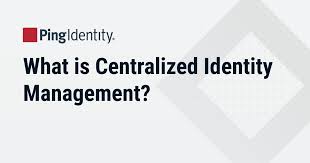The Importance of Centralized Identity Management
In today’s digital age, where organisations rely heavily on various systems, applications, and services to conduct their operations, the concept of centralized identity management has become increasingly crucial. Centralized identity management refers to the practice of managing user identities, permissions, and access controls from a single, unified platform.
One of the primary benefits of centralized identity management is enhanced security. By consolidating user identities and access controls into a centralised system, organisations can enforce consistent security policies across all applications and systems. This helps prevent unauthorised access and reduces the risk of data breaches.
Centralized identity management also improves operational efficiency. Instead of managing user accounts separately in each application or system, IT administrators can streamline user provisioning and deprovisioning processes from a centralised interface. This not only saves time and effort but also ensures that users have the appropriate level of access based on their roles within the organisation.
Furthermore, centralised identity management promotes compliance with regulatory requirements. Organisations in various industries are subject to stringent data protection regulations that mandate secure access control measures. By implementing a centralized identity management system that provides robust authentication and authorisation mechanisms, companies can demonstrate compliance with these regulations more effectively.
Another advantage of centralized identity management is improved user experience. With single sign-on capabilities enabled through a centralised platform, users can access multiple applications with a single set of credentials. This eliminates the need for users to remember multiple passwords and enhances overall user productivity.
In conclusion, centralized identity management plays a vital role in modern IT environments by enhancing security, improving operational efficiency, ensuring regulatory compliance, and enhancing user experience. Organisations that invest in centralised identity management solutions are better equipped to mitigate security risks and streamline their authentication processes effectively.
Understanding Centralised Identity: Key Concepts and Comparisons with Decentralised and Federated Systems
- What is a centralized identity store?
- What is Centralised identity?
- What is an example of a decentralized identity?
- What is the difference between centralized and federated identity systems?
What is a centralized identity store?
A centralized identity store is a secure repository that stores and manages user identities, credentials, and access permissions in a unified location. It serves as a centralised database where organisations can store and retrieve information about users, such as usernames, passwords, roles, and attributes. By consolidating user identity data into a single repository, a centralized identity store simplifies the management of user access across multiple systems and applications. This centralised approach enhances security by allowing organisations to enforce consistent access control policies and authentication mechanisms. Additionally, it streamlines user provisioning and deprovisioning processes, improves operational efficiency, and facilitates compliance with regulatory requirements related to data protection and access control.
What is Centralised identity?
Centralised identity refers to the practice of managing user identities, permissions, and access controls from a single, unified platform. In essence, it involves consolidating user authentication and authorisation processes into a centralised system that governs access to various applications and resources within an organisation. By centralising identity management, businesses can enforce consistent security policies, streamline user provisioning processes, ensure regulatory compliance, and enhance user experience through features like single sign-on. This approach not only strengthens security measures but also improves operational efficiency by simplifying the management of user identities across different systems and applications.
What is an example of a decentralized identity?
In contrast to centralized identity management, a decentralized identity model involves the distribution of identity information across multiple systems or platforms without a single, centralised authority. An example of decentralized identity is blockchain-based identity systems, where individuals have control over their own digital identities stored on a distributed ledger. In this model, users can authenticate themselves and access services without relying on a centralised entity to verify their identity. Decentralized identities offer increased privacy and security as users retain ownership of their personal data and can selectively share information with different parties as needed.
What is the difference between centralized and federated identity systems?
In the realm of identity management, the distinction between centralized and federated identity systems lies in how user identities and access controls are managed across multiple applications and systems. A centralized identity system consolidates user identities and access controls into a single, unified platform, providing a centralised point of control for authentication and authorisation processes. On the other hand, a federated identity system allows organisations to establish trust relationships between different systems or domains, enabling users to access resources across disparate platforms using their existing credentials. While centralized identity systems offer streamlined management and consistent security policies, federated identity systems facilitate seamless access to external resources without the need for duplicate user accounts. Each approach has its unique benefits and considerations, catering to diverse organisational needs in the ever-evolving landscape of digital identity management.

